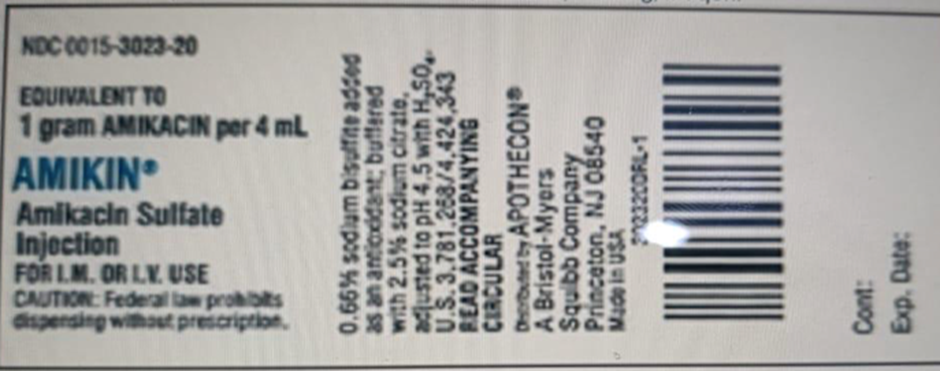The health care provider has ordered Amikin (amikacin) 500 mg, IM q8h.

Drug available:
The nurse should give___mL for each dose.
1.0
2.0
2.5
1.5
The Correct Answer is B
A) 1.0: Administering 1.0 mL of Amikin would provide only 250 mg of amikacin, as the concentration is 1 g per 4 mL (or 250 mg per mL). This dosage is insufficient for the ordered dose of 500 mg.
B) 2.0: Administering 2.0 mL of Amikin is correct. With the available concentration of 1 g per 4 mL, 2.0 mL would deliver 500 mg of amikacin (2 mL x 250 mg/mL = 500 mg), fulfilling the healthcare provider's order for the medication.
C) 2.5: Giving 2.5 mL would result in a total of 625 mg of amikacin, which exceeds the prescribed dose of 500 mg. It's critical to adhere to the prescribed dosage to prevent potential toxicity and ensure patient safety.
D) 1.5: Administering 1.5 mL would provide 375 mg of amikacin, which is still less than the required 500 mg. Accurate dosing is essential in achieving the therapeutic effect and avoiding complications.
Nursing Test Bank
Naxlex Comprehensive Predictor Exams
Related Questions
Correct Answer is ["C","D"]
Explanation
A) Administer 2.5 mL of amoxicillin per dose: This option is incorrect because administering 2.5 mL would only provide 62.5 mg of amoxicillin (since 125 mg is in 5 mL). The prescribed dose is 250 mg, so this volume is insufficient.
B) Administer 10 mL of amoxicillin per dose: This option is also incorrect. Administering 10 mL would provide 250 mg of amoxicillin (since 125 mg is in 5 mL, 10 mL equals 250 mg). However, this option may confuse the correct volume with a miscalculation if misunderstood in context, so it should not be selected without a proper calculation verification.
C) Administer the amoxicillin at 0800, 1200, and 1800: This option is correct. Administering the medication every 8 hours at these times ensures that the medication is given according to the prescribed schedule, maintaining appropriate therapeutic levels.
D) Compare the patient's name and date of birth on the armband with the MAR: This action is crucial for ensuring patient safety. Verifying patient identifiers against the MAR helps prevent medication errors and ensures that the right patient receives the correct medication.
E) Administer the medication by the parenteral route: This option is incorrect. The order specifies oral (PO) administration of amoxicillin, so administering it parenterally would not align with the prescribed route and could lead to incorrect dosing or complications.
Correct Answer is C
Explanation
A) 1.5: Administering 1.5 tablets of allopurinol would total 150 mg, which exceeds the prescribed dose of 0.05 g (50 mg). Dosing in fractions of tablets can be confusing and is not a typical practice unless the medication is specifically scored for division.
B) 2: Giving 2 tablets would amount to 200 mg, which is significantly higher than the prescribed dose of 50 mg. It's crucial to ensure that the dosage adheres to the healthcare provider's orders to avoid potential toxicity or adverse effects.
C) 0.5: Administering 0.5 tablet (50 mg) is correct. Since the available tablet is 100 mg, cutting it in half will yield the prescribed dose of 0.05 g. This is a safe and effective way to deliver the required medication without exceeding the prescribed limit.
D) 1: One tablet of allopurinol would deliver 100 mg, which is double the prescribed dosage of 0.05 g. It's essential for the nurse to accurately calculate the medication to ensure patient safety and therapeutic effectiveness.
Whether you are a student looking to ace your exams or a practicing nurse seeking to enhance your expertise , our nursing education contents will empower you with the confidence and competence to make a difference in the lives of patients and become a respected leader in the healthcare field.
Visit Naxlex, invest in your future and unlock endless possibilities with our unparalleled nursing education contents today
Report Wrong Answer on the Current Question
Do you disagree with the answer? If yes, what is your expected answer? Explain.
Kindly be descriptive with the issue you are facing.
